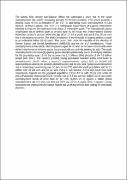Tackling Youth Unemployment with Youth Livelihood Programme (YLP) in Northern Uganda
Abstract
The twenty first century sub-Saharan Africa has witnessed a sharp rise in the youth unemployment rate amidst increasing demand for formal education. This article presents a detailed study of the contribution of the YLP in addressing youth unemployment in Lira District, northern Uganda. The YLP is a nationwide Government of Uganda intervention intended to improve the socio-economic status of vulnerable youth. The International Labour Organisation (ILO) defines youth as persons aged 15–30 though the United Nations General Assembly considers persons within the age set of 15–24 as youth and out of this, 85 per cent live in developing countries. The 1995 Constitution of the Republic of Uganda defines a youth as an individual within 18–30 years. This cohort falls under the mandate of the Ministry of Gender Labour and Social Development (MGLSD) and are the YLP beneficiaries. Youth unemployment in this article refers to persons aged 18–30 who do not have remunerable work either in the formal or informal sector but are available and actively seeking for jobs. The youth unemployment is increasingly gaining global attention particularly due to the bulging statistics for the population aged 15–24 that accounts for 1.3 billion (15%) globally of the 7.6 billion people (UN 2017). The steadily growing young population structure partly contributes to unemployment chiefly when a country’s macroeconomic policy fails to expand job opportunities to address the problem. Bennell (2000) and the UN (2017) project unemployment rise in developing countries by over 50 per cent in 2035 when the youth population will be 1.5 billion with 26 per cent and 20 per cent living in sub-Saharan Africa and South-East Asia respectively. Uganda has the youngest population in East Africa with 78 per cent under 30 years (Population Secretariat 2013), fertility rate of 5.8 per woman (UBoS 2016) and youth unemployment stands at more than 65 per cent (UBoS 2016) against a stable global unemployment rate of 8 per cent between 2010 and 2011 (Ajaegbu 2012). Uganda’s young population has implications for labour market and youth livelihoods thus calling for immediate attention.

